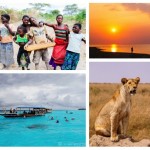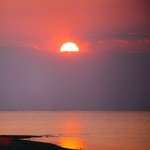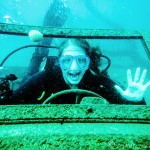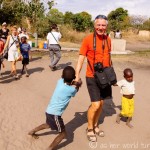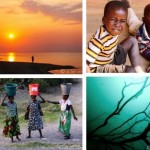After three weeks in Tanzania, we cross over into neighboring Malawi, a landlocked country about the size (but not the shape) of Ohio. The country is situated alongside Lake Malawi, the ninth largest lake in the world. There is some dispute over the lake’s border in regards to the Tanzania / Malawi section, particularly because in recent years it has come to attention that there may be oil under the lake (there is no question of Mozambique’s area of control). I recently saw the Oscar-nominated documentary Virunga about a national park in nearby Congo that is being explored and possibly exploited by a British petroleum company; I hope the same does not happen here.
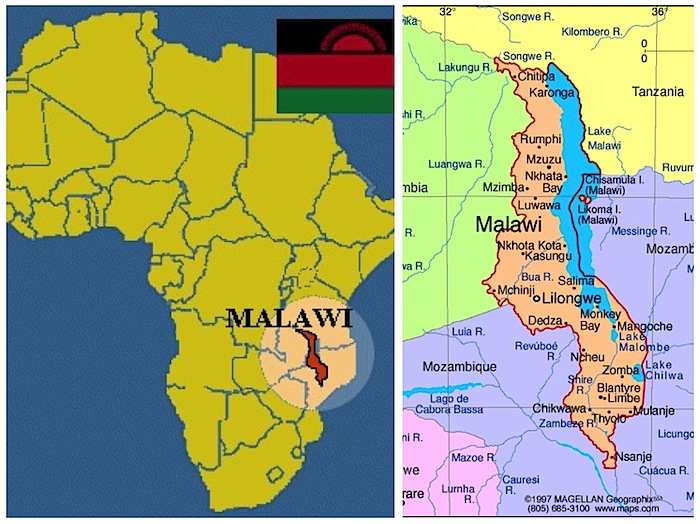
[map images via here and here]
I’ve said it before and I’ll say it again — it’s remarkable how fast the landscape can change when you cross a border. Within miles of leaving Tanzania we see more water and greenery, plus lots of locals out and about. It’s almost palpable that we are now in a different country.
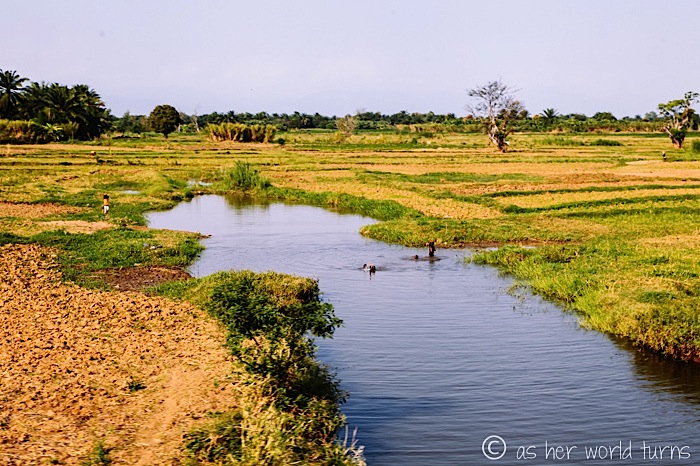

My biggest observation about Malawi is that it’s the friendliest country in Africa. We are received so warmly here — instead of distrusting glances, locals wave and smile. Adults and children alike are happy to greet us.
Our guide Norman tells us that in the past, tourists would often leave behind clothes or donate items to people in the communities we visit. Since Malawi is one of the poorer countries in this part of Africa, that’s where tourists’ charity tended to go. Now it’s less encouraged (not sure why that is), but the years of donations have built a strong platform of goodwill between the people of Malawi and visitors. One other reason locals might welcome tour groups is because it’s a less popular country to visit — neighboring Tanzania gets way more tourism dollars because of the Serengeti, Kilimanjaro, and Zanzibar, and its residents seem skeptical of all these visitors passing through. But Malawians welcome the overland trucks.





We pass many fields bisected by long roads stretching out towards the horizon, populated by locals biking or walking.


Soccer fields (excuse me, football fields) are a common sight. These communities love to play; we’ll meet locals at our next stop who tell us about the leagues they belong to, and how far they travel to play other villages. It’s a big deal here on a local level.


During a toilet stop we meet three women carrying water from a nearby river to their village. They hoist these buckets atop their heads with seemingly little effort, and it’s humbling to watch them go about this daily ritual. This is the first time we talk to locals since crossing the border and these women are so welcoming. They tell us we can take photos (without any mention of money or tips, though we do give them something) and even invite our tour guide Norman to try carrying a bucket of water on his head. Cue laughter and big smiles from everyone.

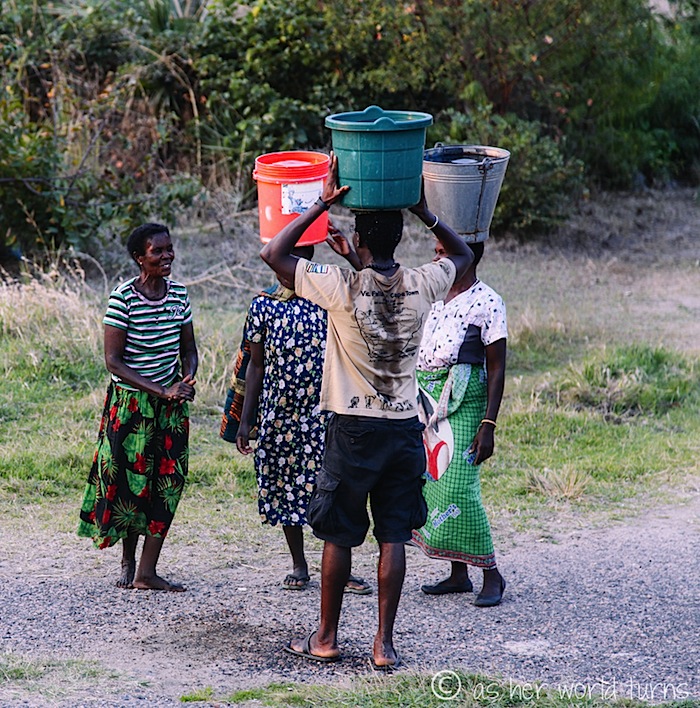
That evening we stay at Camp Chitimba in northern Lake Malawi. Following dinner we all end up at the bar, alternating between use of painfully slow wifi (30 minutes to load my email… I think it costs me $3) and trying springbok shots.

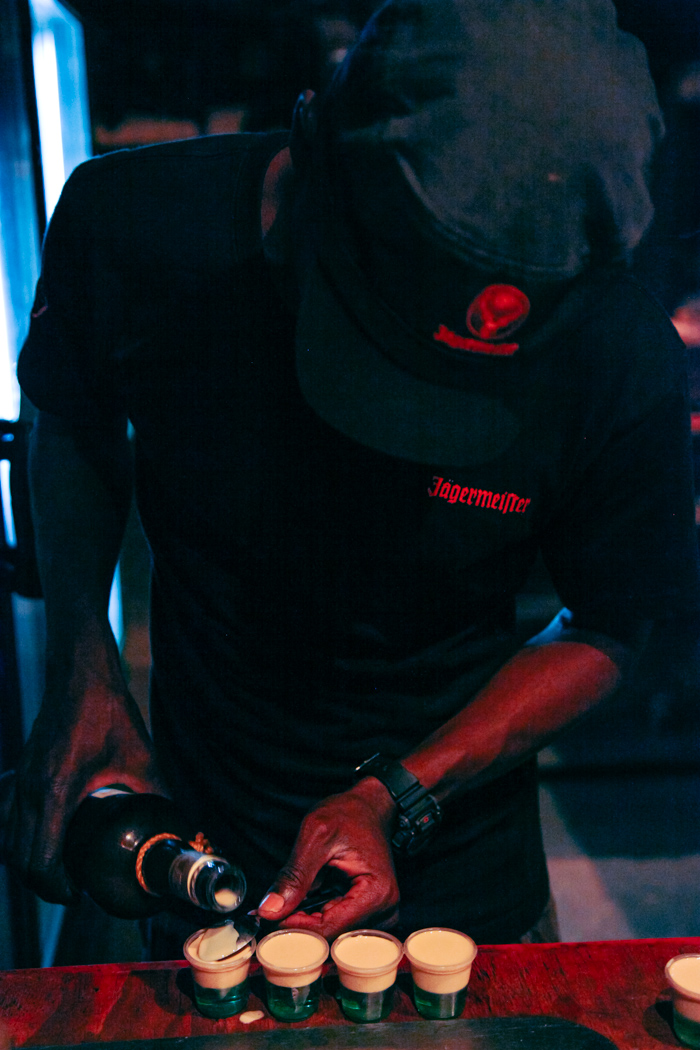
Springbok shots are inspired by the popular South African rugby team, whose mascot is the variety of antelope by the same name. (The rugby team’s main color is green.) The shots are one measure each of amarula (a tasty cream liquor from South Africa) and creme de menthe. I don’t partake this particular evening, but during my travels through Namibia a month later I consume way too many of these shots in the name of tour group camaraderie (they taste pretty good and the liquor isn’t super strong).

We convince Renate and Klaus (the beloved older German couple on our tour) to try the shots. They are game for anything! I love them.

The next morning I walk around the campsite before we take off. It’s located about a hundred yards from the shore of Lake Malawi.




I paid $7 to upgrade to a single room in these huts instead of camping. So nice to sleep in a bed!

For the record, I wish we had spent two nights here to get a full day of activities in the northern Lake Malawi area. Local highlights include a witchdoctor visit, woodcarving lessons, and hiking to a waterfall (all can be arranged through the campsite). If you’re planning your own trip here, stay a few nights to make the most of it.

Our overland truck is parked in a pretty spot among the trees:

Nomad Tours names their trucks after dead rock stars. We have Tommy… I’m embarrassed to admit I have no idea what rock star he’s named after. Can anyone help? A cursory Google search did not yield unanimous results.

We stop for a grocery break en route to our next destination, Kande Beach. I opt for an iced coffee at the shop next to the grocery store; it’s insanely good, but that might just be my caffeine deprivation talking.

One more notable comment from this day of driving — our guide Norman points out these hevea trees, which are being harvested for rubber. But they’re not endemic; they were imported from Brazil to Malawi. The rubber is then sent to neighboring countries like Zimbabwe where it will be manufactured into products. Each tree yields 4 or 5 kilos of rubber; it’s a liquid sap that can be harvested when the tree is around seven years old, or two meters high. They continue to produce rubber for about 30 years. Norman tells us the main company in the area is called Vizara Plantation and they are known for treating their employees very well by paying for school and hospital bills for their families.


Next up, Kande Beach on Lake Malawi for two nights!
Thanks to Nomad Tours for discounting this tour in exchange for blogging and photography. Opinions are my own.

